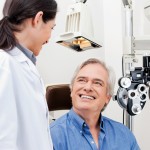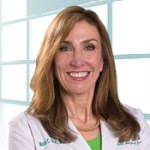By Maria C. Scott, M.D.
 Cataract surgery is one of the most common surgical procedures in the United States. Long gone are the two-week hospital stays for cataract patients. Today, cataract surgery is performed in less than 15 minutes in most cases. Patients, whose eyes were dilated prior to surgery, leave wearing simply a pair of dark glasses. Within 48 hours, the majority of patients return to most routine activities with minimal restrictions.
Cataract surgery is one of the most common surgical procedures in the United States. Long gone are the two-week hospital stays for cataract patients. Today, cataract surgery is performed in less than 15 minutes in most cases. Patients, whose eyes were dilated prior to surgery, leave wearing simply a pair of dark glasses. Within 48 hours, the majority of patients return to most routine activities with minimal restrictions.
While age is the primary reason why we develop cataracts, it is not the only factor. Increased exposure to sunlight, diabetes, certain medications, ocular inflammation, ocular trauma and family history may also play into the equation.
Cataracts form over the course of a few months to a few years, thus patients may not realize they are at risk. Having an annual eye exam is critical to detecting cataracts. Annual check ups allow you and your eye care physician to monitor the health of your eyes and take any steps necessary to preserve your vision. If you notice double vision or a sudden increase in cloudiness of your vision, immediately contact your eye care professional.
Today, bladeless laser cataract surgery is further revolutionizing the entire procedure and providing patients with unparalleled visual results. The FDA-approved bladeless femtosecond laser uses the same technology as that used in bladeless LASIK surgery. Whereas, manual cataract surgery requires handheld surgical instruments to make incisions, the bladeless femtosecond laser provides image-guided control for increased accuracy and predictability. Additionally, this laser enables surgeons to precisely program the size, shape and location of the incision and lens capsule for each patient. The femtosecond laser also softens the lens to reduce the amount of energy and fluid needed to remove the cataract, resulting in faster recovery time. The femtosecond laser can correct for low astigmatism, allowing patients to see as clearly as possible for distance vision without relying on glasses.
When selecting a cataract surgeon, make sure he or she is an experienced, highly skilled, board- certified ophthalmologist. It is important that he or she offers the most proven technology, treatments and testing to provide the best results possible. Talk to your doctor, ask questions, and discuss the options that are right for your situation. 
It is an exciting time for cataract patients who want to improve their full range of vision, regain their quality of life and minimize or eliminate their dependence on glasses.
The author, Dr. Maria Scott, is one of the most respected cataract surgeons in the country. Founder and Medical Director of Chesapeake Eye Care & Laser Center in Annapolis, Maryland, Dr. Scott is a board-certified ophthalmologist, who is consistently named one of the area’s “Top Docs.”
